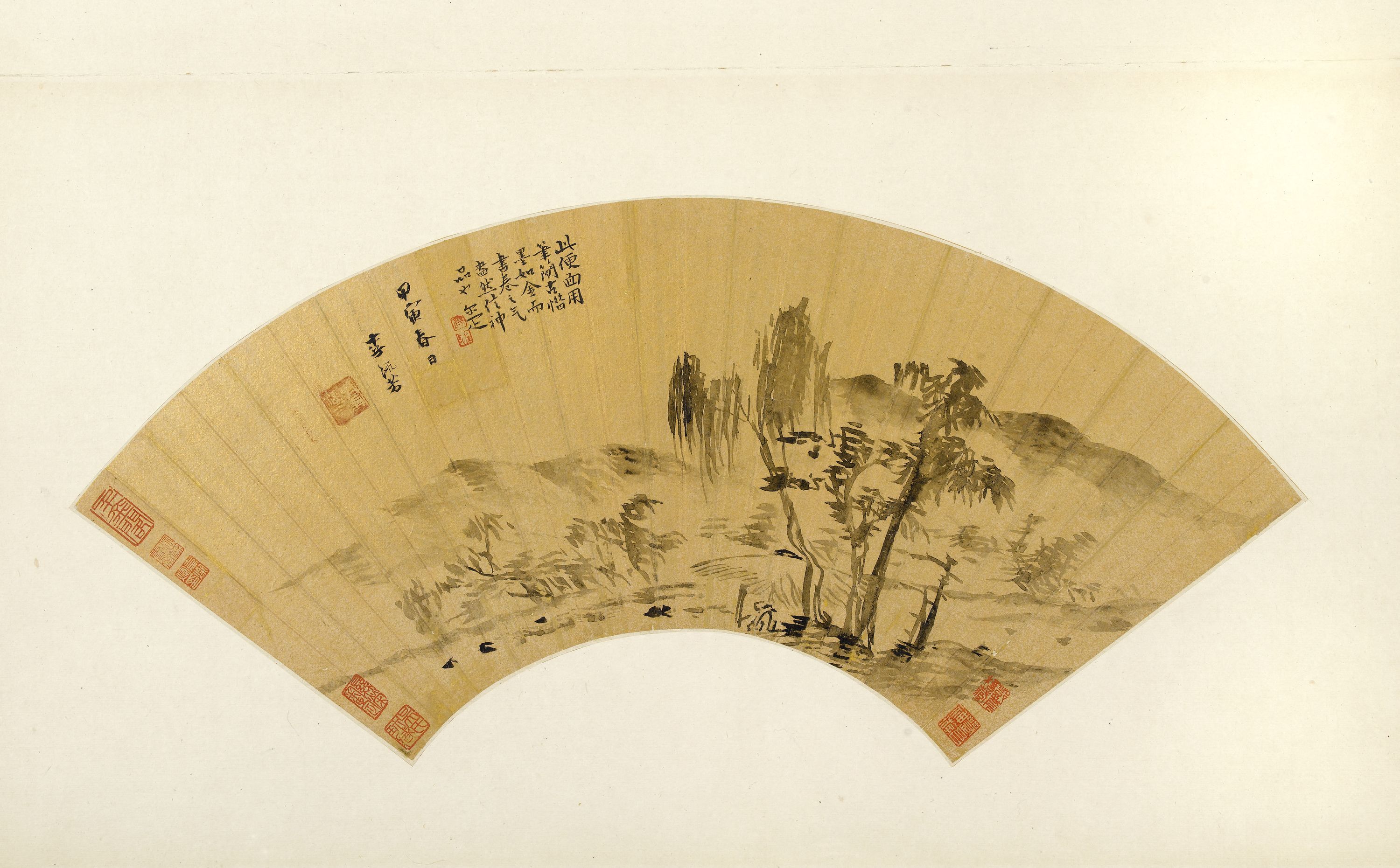
Paysage
Papier, Encre
Peinture
李流芳; 李流芳印; 爾疋; 爾; 雅
Achat
M.C. 2007-7
Inscription:
A. Li Liufang
In the Jiayin year [1614], spring, Li Liufang.
B. Deng Erya
On this fan, the brushstrokes are concise in the ancient style, the ink is used as sparely as gold. It is imbued with the spirit of a lettered man, the work is of divine class. Erya.
Li Liufang is known both as a painter and as a poet. In his early life, he aspired to a career as a public official and achieved the rank of juren in 1606. Having failed repeatedly to pass the doctoral examination, he gave up this ambition for good and retired to the area of Jiading, his native town, in 1622. His poetry was published in 1629 under the title Tanyuan ji, after the name of the place where he spent the end of his life.
His works dating from the decade before this voluntary retirement were already executed in a highly personal style, whose spare aesthetic is sometimes attributed to the influence of Ni Zan (1301-1374). Yet it is a very different painting technique to that of the Yuan master. In the Cernuschi Museum fan, the series of small disjointed touches create the impression of a landscape while it almost appears to dissolve. This brushwork lends itself in particular to the depiction of the foliage of the weeping willows, whose presence at the centre of the composition is the stylistic signature of Li Liufang. This painting prefigures a fan in the Nanjing Museum dated 1620, whose composition is very similar, except for the stronger brushstroke.
To the right of the signature, a colophon was written by the calligrapher and collector Deng Erya (1884-1954), who comments on the astonishing economy of means employed by the painter and concludes by classing the fan as a work of the supreme category, shen pin.
Reubi, François, "Le Pinceau des lettrés, peintures chinoises de la collection du professeur Francois Reubi", Genève, musée des arts d'Extrême-Orient, Collections Baur n°56, automne-hiver 1993, p.7-50